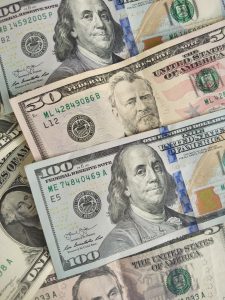The foreign exchange market, also known as the forex market, is the largest and most liquid financial market in the world. It is a decentralized market where currencies are traded 24 hours a day, five days a week. But how did this market come to be? In this article, we will delve into the history of the forex market and explore its evolution over time.
The origins of the forex market can be traced back to ancient times, when people would exchange goods and services for other goods and services. However, the first recorded currency exchange can be dated back to the 4th century BCE, when Persian traders exchanged coins from different regions. This practice continued over the centuries, with merchants exchanging coins from different countries as they traveled the world.
In the Middle Ages, foreign exchange trading became more formalized. Merchants would gather in trading centers such as Venice, Genoa, and Amsterdam to exchange currencies. These trading centers were the precursors to modern-day exchanges, and they helped to establish a standardized system for exchanging currencies.
The first true foreign exchange market was established in Amsterdam in the 17th century. This market was created to facilitate trade between the Dutch and English East India Companies, and it allowed traders to exchange currencies at a fixed exchange rate. This marked the beginning of formalized foreign exchange trading, and it paved the way for future developments in the industry.
In the 19th century, advances in communication technology and transportation made it easier for traders to exchange currencies across long distances. The advent of the telegraph allowed traders to receive up-to-date information about exchange rates, while the invention of steamships made it easier for traders to transport currencies from one country to another.
However, it wasn’t until the 20th century that the forex market truly began to take shape. The Bretton Woods Agreement, signed in 1944, established a system of fixed exchange rates between countries. This system was designed to promote stability in the global economy, but it also created opportunities for traders to profit from fluctuations in exchange rates.
In the 1970s, the Bretton Woods system began to break down as countries struggled to maintain fixed exchange rates in the face of economic pressures. This led to the creation of a floating exchange rate system, where exchange rates are determined by supply and demand in the market. This system allowed for greater flexibility and liquidity in the forex market, and it paved the way for the massive growth of the industry in the decades that followed.
Today, the forex market is a global network of banks, financial institutions, and individual traders. It is estimated that the forex market trades over $5 trillion in currency every day, making it the largest financial market in the world. The market is open 24 hours a day, five days a week, and it facilitates trade between currencies from all over the world.
In conclusion, the forex market has a long and fascinating history that spans centuries. From ancient times to the modern era, the market has evolved and grown to become the largest and most liquid financial market in the world. While the market has faced challenges and changes over the years, it remains a vital component of the global economy and a key driver of international trade.





